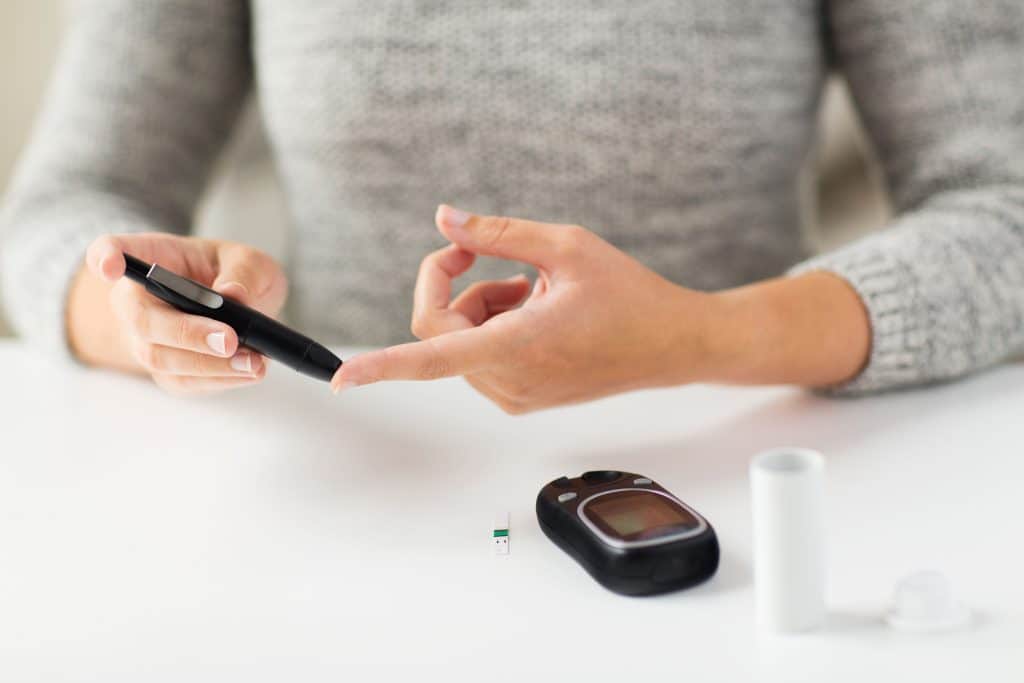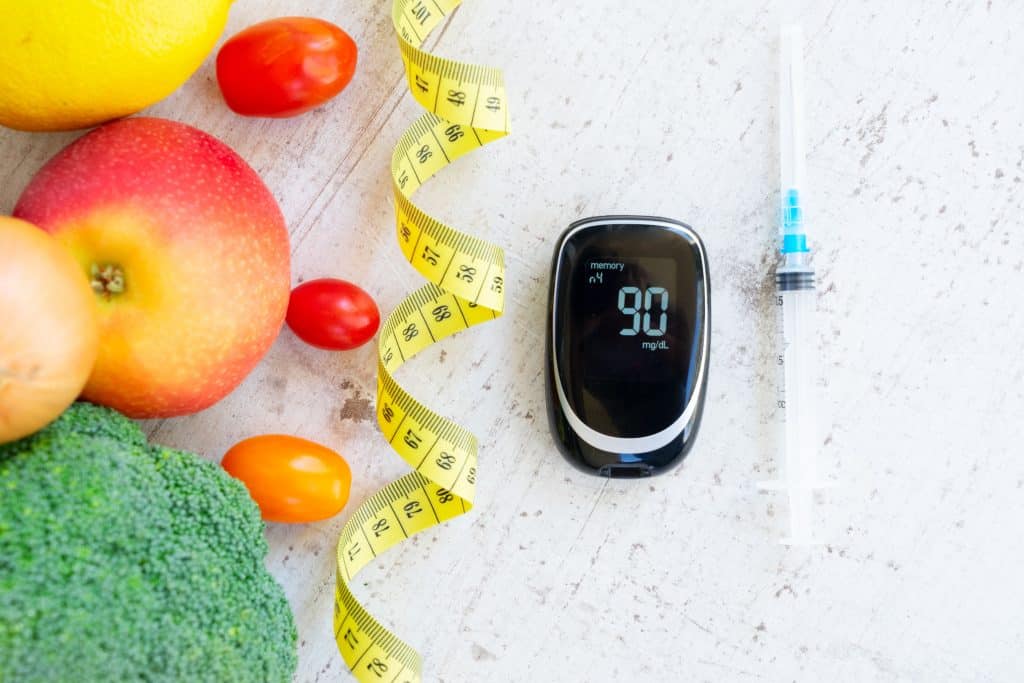What’s the Hardest Part About Being Diabetic – What it’s Like Living With Diabetes
Posted by Prescription Hope - See Editorial Guidelines (Last Updated On: Mon Apr 24 2023)
Let me start this off by saying that there is not just one particular hard part about being diabetic. Multiple aspects of this illness are challenging. This article will discuss the different elements that different people believe are the hardest parts about being diabetic. I, personally, come from a type 1 diabetes background, but I’ll do my best to give aspects of both type 1 and type 2 diabetes that are difficult and how to overcome those difficulties.
New Diagnosis
 The hardest part about being diabetic may come right after the diagnosis. Individuals tht are diagnosed with type 1 diabetes at a very young age may not have a hard time making the transition. This is due to them not having a long-life experience without diabetes. So, as they grow older, most of what they have known has been the diabetic lifestyle.
Those diagnosed later in life, like myself, have to go through a dramatic shift. Transitioning from eating whatever you want and whenever you want without worrying about shots, or spikes and drops in blood sugar, to then monitoring all of that accurately is no easy task.
It can be a bit overwhelming walking out of the hospital at 18 years old and having to adapt to a whole new way of life essentially.
Dealing with a new diagnosis of any kind can be extremely difficult. It can often feel like the end of the world or, like the abilities you once possessed, are restricted from that moment onward. It can lead to moments of depression and loneliness.
The hardest part about being diabetic may come right after the diagnosis. Individuals tht are diagnosed with type 1 diabetes at a very young age may not have a hard time making the transition. This is due to them not having a long-life experience without diabetes. So, as they grow older, most of what they have known has been the diabetic lifestyle.
Those diagnosed later in life, like myself, have to go through a dramatic shift. Transitioning from eating whatever you want and whenever you want without worrying about shots, or spikes and drops in blood sugar, to then monitoring all of that accurately is no easy task.
It can be a bit overwhelming walking out of the hospital at 18 years old and having to adapt to a whole new way of life essentially.
Dealing with a new diagnosis of any kind can be extremely difficult. It can often feel like the end of the world or, like the abilities you once possessed, are restricted from that moment onward. It can lead to moments of depression and loneliness.
Lifestyle Changes
What comes with a new diagnosis of diabetes is a dramatic lifestyle change. Regardless of which type of diabetes you may have, lifestyle changes may be the hardest part about being diabetic.Type 1
Many lifestyle changes are needed for those that are diagnosed with type 1 diabetes. One of these changes is learning how to count carbs based on everything you consume, as well as self-injecting insulin. The change of having to give myself a shot and prick my finger multiple times a day, every day was a challenging one. One of the hardest parts about being diabetic for me was adjusting to giving myself about 5-7 self-injected shots a day and pricking my finger about eight times a day. With advances in technology and medical devices, this isn’t as common but is still necessary for some. For a person with type 1 diabetes to maintain glycemic control, they have to count the carbs that they consume and give an insulin shot based on the amount of carbs. Learning to do this after spending 18 years of my life, not even looking at a nutritional label, was extremely difficult. The hard part isn’t necessarily counting the carbohydrates but calculating how much insulin is needed to keep your blood sugar levels in range. What many people don’t understand is that different types of carbs (simple vs complex carbs) will affect blood sugar levels differently. There are also other factors that affect blood sugar levels as well, such as stress levels or injuries. This has to be taken into consideration when administering insulin.Type 2
The most significant lifestyle changes those with type 2 diabetes need to make is adding exercise and incorporating a diet into their routine. Most medications that are used to treat type 2 diabetes require diet and exercise for them to be most effective. A typical diet for type 2 diabetes may include complex carbohydrates, protein, fruits, and vegetables. Simple carbohydrate foods, such as white bread or pastries, should be avoided as they can spike blood sugar levels dramatically.
Incorporating a healthy diet can help individuals lose weight as well as help with glycemic control which prevents other medical conditions from developing.
However, sticking to a strict diet can be extremely difficult for some individuals, especially if the individual has not been on a diet before.
Incorporating exercise is another necessary lifestyle change that would need to be made for a person diagnosed with type 2 diabetes. Type 2 diabetes is caused by insulin resistance, and exercise increases insulin sensitivity allowing for better glycemic control.
Making changes to one’s diet and exercise can be a challenging part about being diabetic, as it requires a lot of discipline. Getting into a rhythm that works for you and sticking to that rhythm day after day and week after week can be a very grueling process for some.
A typical diet for type 2 diabetes may include complex carbohydrates, protein, fruits, and vegetables. Simple carbohydrate foods, such as white bread or pastries, should be avoided as they can spike blood sugar levels dramatically.
Incorporating a healthy diet can help individuals lose weight as well as help with glycemic control which prevents other medical conditions from developing.
However, sticking to a strict diet can be extremely difficult for some individuals, especially if the individual has not been on a diet before.
Incorporating exercise is another necessary lifestyle change that would need to be made for a person diagnosed with type 2 diabetes. Type 2 diabetes is caused by insulin resistance, and exercise increases insulin sensitivity allowing for better glycemic control.
Making changes to one’s diet and exercise can be a challenging part about being diabetic, as it requires a lot of discipline. Getting into a rhythm that works for you and sticking to that rhythm day after day and week after week can be a very grueling process for some.
Social Interactions
An often-overlooked hard part about being diabetic is dealing with social interactions. I have been in countless situations where I try to hide checking my blood sugar or hide administering insulin because I felt judged. This occurs mostly in restaurant settings with a group of people. Other times that this has been difficult for me has been at the beach or with friends in a pool. I wear an insulin pump that is plain as day when I’m not wearing a shirt and that can be uncomfortable to embrace, especially when I’m around people I don’t know all that well. The reality of it is that you don’t want others to think you’re different. The desire is to fit in and to feel accepted. But that becomes difficult and uncomfortable when your pricking your finger and giving yourself a shot at the dinner table, or when you have people asking about the thing you have on your stomach. Navigating this situation is a difficult one, but you have to learn to embrace it. Embracing who you are and the things that make you, you, is nothing to be ashamed of. The sooner you embrace the uncomfortable aspects of diabetes, the sooner the people around you will become comfortable with it.Mood Changes
Many people don’t understand this, but the level of one’s blood sugar can impact mood. I have noticed through my experience that when my blood sugar is out of range, I can become irritable. Hyperglycemia, or high blood sugar, can make you feel tired and exhausted. It makes you feel dehydrated and like you have no energy to do anything. This leads to agitation and irritation. Prolonged hyperglycemia may even lead to feelings of depression. The weeks and days that led up to my diagnosis made me feel like I had been robbed of all joy. The only way I know how to put it is it felt like I was a zombie. This was due to my glycemic levels being so high for a prolonged period and not being aware of it.Hypoglycemia
Hypoglycemia may be the hardest part about being diabetic for me. Dealing with low blood sugar was not something I was aware of, nor did I know much about it before being diagnosed with diabetes. Now that I have been living with diabetes since 2013, I am acutely aware of hypoglycemia daily. The greatest worry for me is experiencing low blood sugar and not being able to bring it back up before passing out. This includes every night when I head to bed, and I fear not waking up from low blood sugar. This is life-threatening, and those that have experienced hypoglycemia know just how much it takes out of you.Financial Burden
 The costs of medication and medical devices is the hardest part about being diabetic for too many people, including myself. The costs for health care expenses for those with diabetes is 2.3 times higher than those without diabetes.
Individuals with diabetes will have an average medical expense of nearly $17,000 a year, with at least $9,000 being attributed directly to diabetes care. These expenses include hospital and physician visits, medications, and medical devices.
On top of these direct costs are indirect costs. For example, an individual may have to take days off work due to being too ill to work. Not getting a paycheck for that day can be detrimental for some individuals, especially those already in financial trouble.
Other medical conditions can arise due to diabetes, which increases the financial burden even more. This would call for more hospital visits and more medication if needed. This can also lead to an inability to perform certain work, limiting a person’s “worth” when it comes to the workforce.
Prescription Hope exists to help those with this type of financial burden.
The costs of medication and medical devices is the hardest part about being diabetic for too many people, including myself. The costs for health care expenses for those with diabetes is 2.3 times higher than those without diabetes.
Individuals with diabetes will have an average medical expense of nearly $17,000 a year, with at least $9,000 being attributed directly to diabetes care. These expenses include hospital and physician visits, medications, and medical devices.
On top of these direct costs are indirect costs. For example, an individual may have to take days off work due to being too ill to work. Not getting a paycheck for that day can be detrimental for some individuals, especially those already in financial trouble.
Other medical conditions can arise due to diabetes, which increases the financial burden even more. This would call for more hospital visits and more medication if needed. This can also lead to an inability to perform certain work, limiting a person’s “worth” when it comes to the workforce.
Prescription Hope exists to help those with this type of financial burden.


